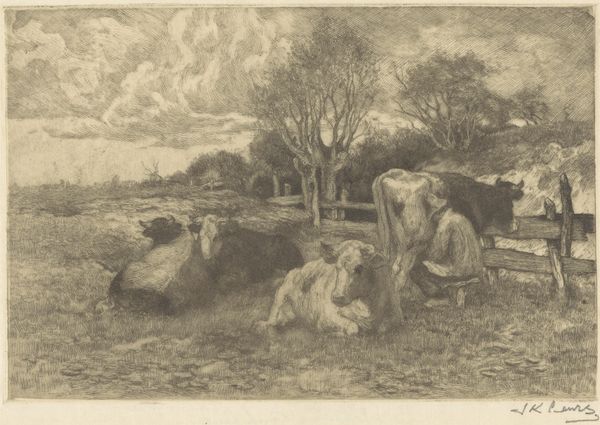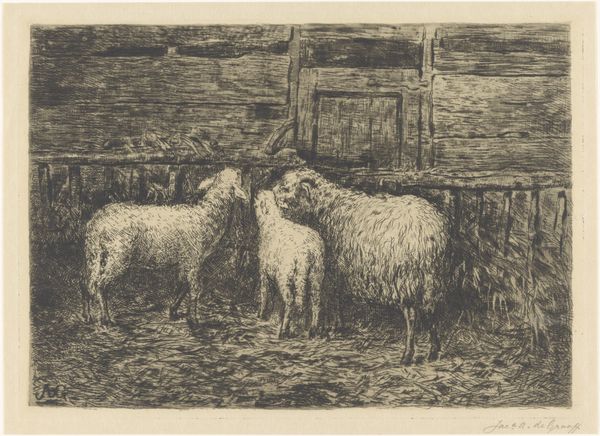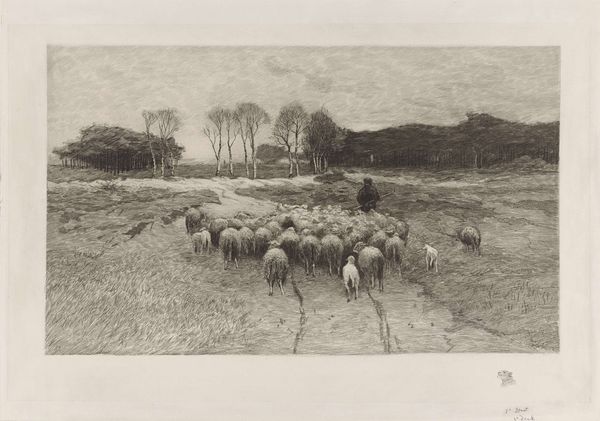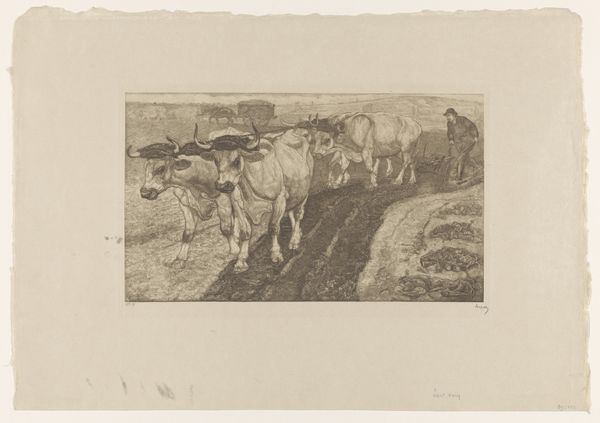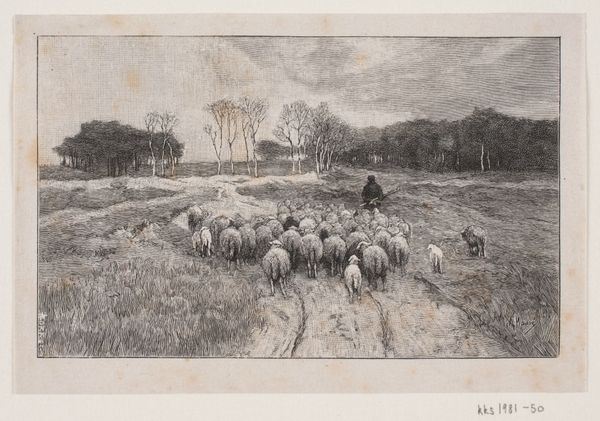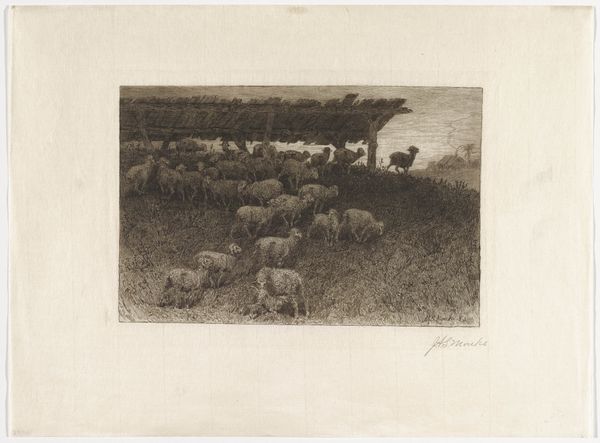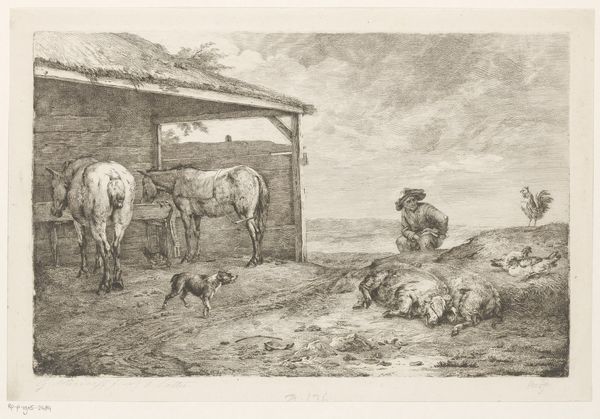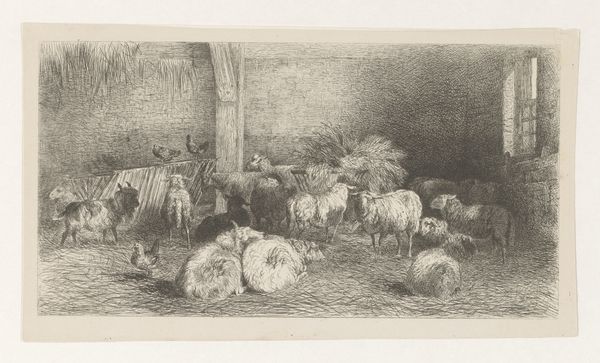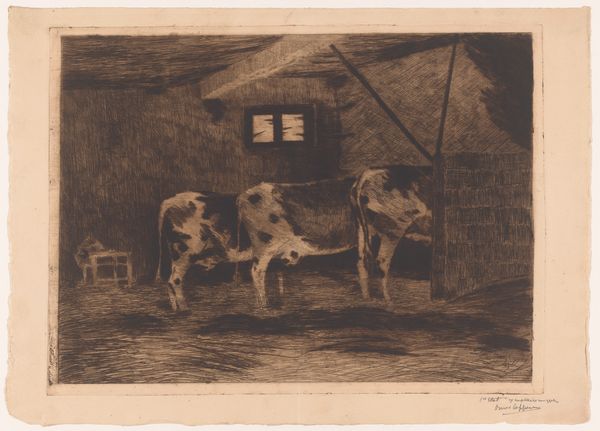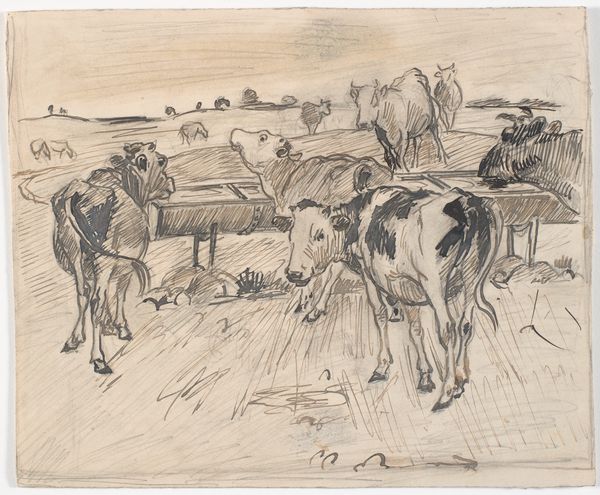
drawing, pencil
#
pencil drawn
#
drawing
#
pencil sketch
#
landscape
#
charcoal drawing
#
charcoal art
#
pencil drawing
#
pencil
#
genre-painting
#
realism
Dimensions: height 385 mm, width 480 mm
Copyright: Rijks Museum: Open Domain
Editor: Here we have "Herder en een vrouw bij een schaapskudde," which translates to "Shepherd and a Woman with a Flock of Sheep," possibly from 1889, by Herman Johannes van der Weele. It’s a drawing using pencil, and I’m struck by the sheer number of sheep depicted and their density in the composition. What jumps out at you when you see this work? Curator: Immediately, I’m thinking about the social context in which Van der Weele created this image. Drawings like this circulated widely, offering glimpses into rural life. We have to remember the Industrial Revolution was radically reshaping society and labor practices, often idealizing simpler times gone by. Notice how the artist meticulously renders the sheep, almost blurring them together into a collective mass. What does that visual choice communicate, do you think? Editor: Perhaps it's a reflection of the common person or the everyman, a blurring of individuality in the face of the masses. Does that read into this drawing as perhaps an oversimplification of what life would've been at this time? Curator: That's perceptive. There's an undeniable romanticization happening here. The drawing glosses over the realities of rural poverty and presents an idyllic scene likely intended for an urban audience. Look at how even the houses in the background seem picturesque and softened. Does this soften our perception of its historical importance? Editor: I think so; it forces us to recognize the intent of these landscapes and consider its sociopolitical context alongside appreciating its formal aspects. Curator: Precisely! It reminds us to interrogate the narratives presented by art, understanding that even seemingly simple scenes are loaded with cultural meaning and purpose. Editor: I now realize it gives insights not only into art history, but social history as well, and shows the era through rose-tinted glasses for mass appeal. Curator: Indeed. It's a powerful reminder that art never exists in a vacuum.
Comments
No comments
Be the first to comment and join the conversation on the ultimate creative platform.

